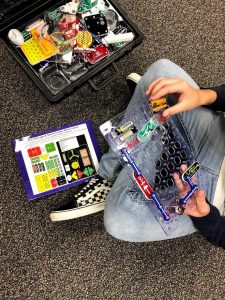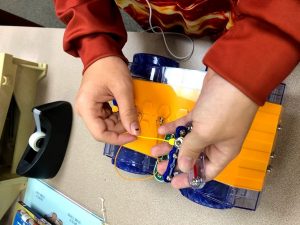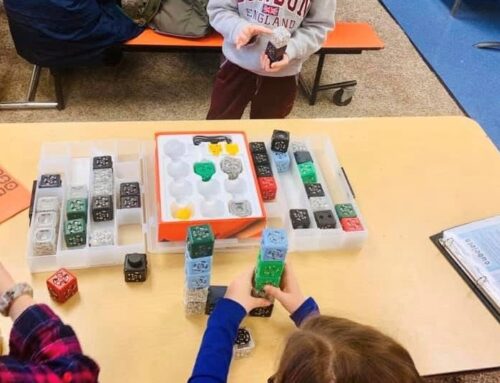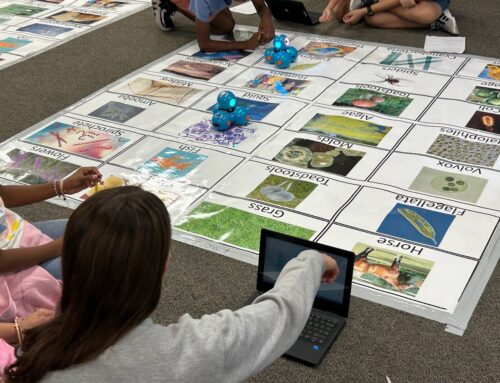I am not going to lie, when I was first told about circuits in makerspaces, my first thought was “Electricity? And middle school students? I don’t think so!” It wasn’t until I visited another librarian during the summer and checked out the different items that she had in her makerspace that I noticed that a circuit makerspace was not at all what I thought it was.
What are Snap Circuits?
Snap Circuits are circuit kits that include wires, slide switches, resistors, and capacitors that all easily “snap on” or connect to a plastic grid. All the pieces are numbered and color-coded for students to discover them. When put together, the pieces resemble a more “kid friendly” version of the circuits that are found in of radios and other gadgets. Unlike “real circuits”, there isn’t any soldering required.
are circuit kits that include wires, slide switches, resistors, and capacitors that all easily “snap on” or connect to a plastic grid. All the pieces are numbered and color-coded for students to discover them. When put together, the pieces resemble a more “kid friendly” version of the circuits that are found in of radios and other gadgets. Unlike “real circuits”, there isn’t any soldering required.
Introducing these circuits and discussing the safety matters are still important even though they are more kid friendly. The two biggest items that we discuss about Snap Circuits is never leaving a circuit abandoned when turned on or touching a motor when it is running. We always talk about how the circuits still need to be watched to be sure that nothing bad could ever happen and that when a motor or fan is on, it can be hot or hurt your fingers.
How to Introduce Snap Circuits?
After introducing safety, I start with the circuit lesson. I love to connect the lessons to something that the students can understand, so I compare the circuits to your heart. Just as the heart pumps blood to circulate, a battery produces the pressure to push electrons around a circuit. The battery is the heart of the circuit and everything revolves around it.
Then I explain that circuits allow electricity to move. I like to compare them to a puzzle—you need to connect all the pieces for the puzzle to be complete. Circuits are just the basic properties of electricity and electronics. If a student breaks open any kind of electronic device (even the ones from the 60s) you see a circuit. There are different kinds of circuits, series and parallel, and they all can do various tasks such as shining a light or running a fan or possibly both at the same time.
Why are They So Great?
One great component of these circuits is that they are lessons in building and procedural texts. The instruction manuals that students follow have large and colored illustrations that have simple directions to follow each project. The instructions slowly get harder as you move throughout the instruction manual, slowly challenging the students. Once students are able to master the instruction manuals, students then have the freedom to experiment and create their own circuit and electronic devices based off the knowledge that they have gathers while using the instruction manual.
Snap Circuits are affordable and durable and can last for years. You do not need to purchase different materials (other than batteries) to keep maintaining the items in your makerspace. The two most popular kits that I have in my library are the Circuit Rover and the Circuit Light Kit. The rover was so popular that I purchased an additional one!

Students enjoy using the circuits and they experience a rewarding feeling about connecting the pieces to create a rover that moves or making a light blink. I highly recommend all teachers and librarians to have create a circuit makerspace in your classroom or library . If you want to start but don’t know how, try out this simple activity sheet to make spin art using snap circuits!
Where can you buy Snap Circuits? Check them out here!








Leave A Comment